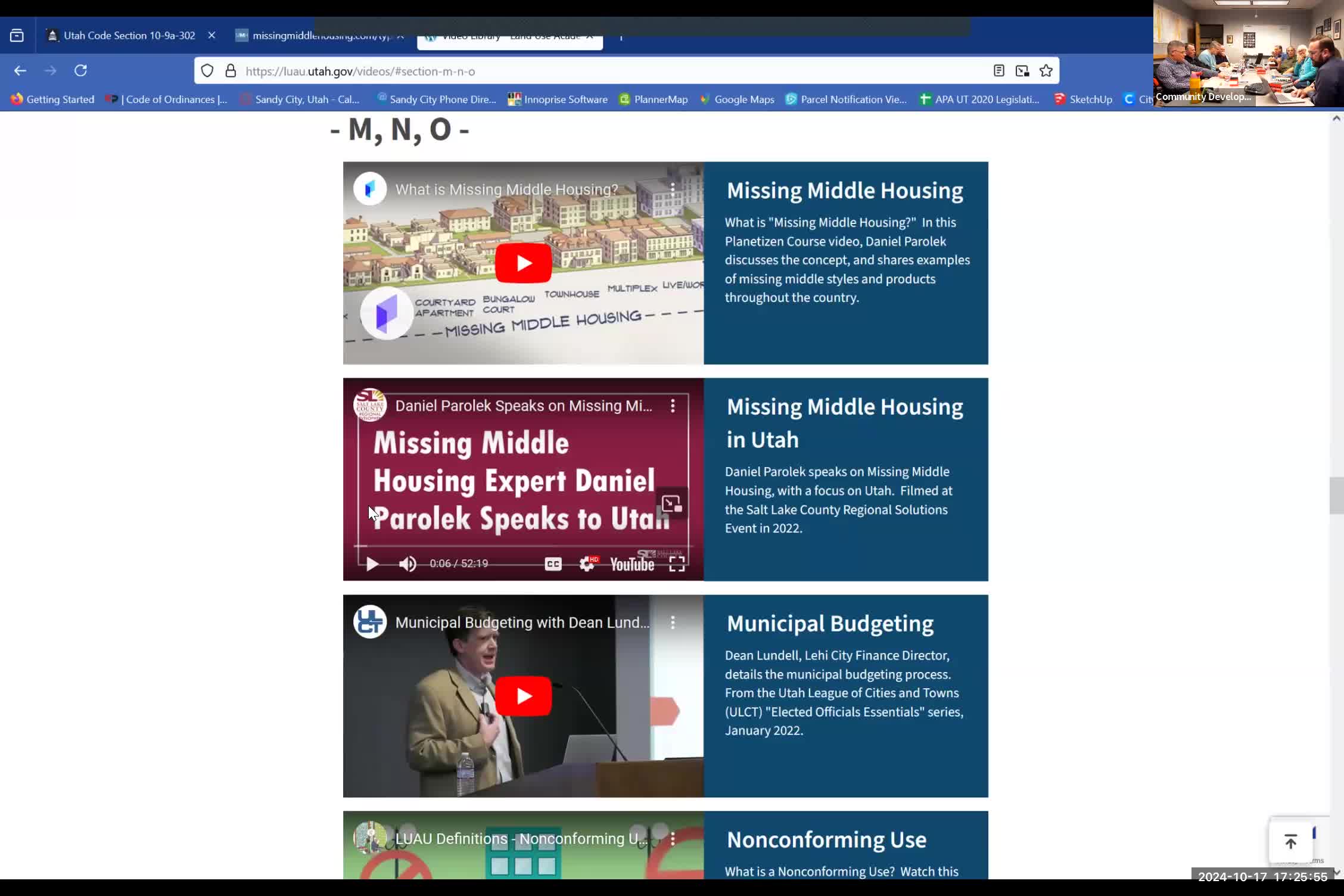Missing middle housing gains momentum amid affordability crisis
October 17, 2024 | Sandy City Planning and Zoning, Sandy, Salt Lake County, Utah
This article was created by AI summarizing key points discussed. AI makes mistakes, so for full details and context, please refer to the video of the full meeting. Please report any errors so we can fix them. Report an error »

In a recent government meeting, Daniel Perolich presented insights on \"missing middle housing,\" a concept aimed at addressing the growing need for affordable housing options. Perolich, an expert in urban design and author of a book on the subject, emphasized the importance of integrating various housing types that fit within the scale of single-family homes while accommodating multiple units. This approach seeks to enhance housing choice without overwhelming neighborhoods with high-density developments.
Perolich highlighted that the state legislature is actively pursuing policies to promote missing middle housing, with several bills expected in the upcoming session. He noted that housing affordability has become a pressing issue nationwide, affecting not only urban centers but also smaller towns. Currently, 30% of households are considered housing cost-burdened, spending over 30% of their income on housing, a figure that rises to over 55% for renters.
The discussion underscored the need for communities to adapt their zoning laws to facilitate the development of missing middle housing. Perolich pointed out that only 11% of residential zoning in Salt Lake County currently allows for significant opportunities for this type of housing. He urged local governments to revise their comprehensive plans and zoning codes to enable a broader range of housing types, such as duplexes and fourplexes, particularly in areas near transit and existing infrastructure.
The meeting concluded with a call to action for community leaders to engage in discussions about missing middle housing, emphasizing that it is not merely about increasing density but about providing diverse housing options that meet the needs of residents at different life stages. As the demand for affordable housing continues to rise, the adoption of missing middle housing strategies may prove essential in creating sustainable and inclusive communities.
Perolich highlighted that the state legislature is actively pursuing policies to promote missing middle housing, with several bills expected in the upcoming session. He noted that housing affordability has become a pressing issue nationwide, affecting not only urban centers but also smaller towns. Currently, 30% of households are considered housing cost-burdened, spending over 30% of their income on housing, a figure that rises to over 55% for renters.
The discussion underscored the need for communities to adapt their zoning laws to facilitate the development of missing middle housing. Perolich pointed out that only 11% of residential zoning in Salt Lake County currently allows for significant opportunities for this type of housing. He urged local governments to revise their comprehensive plans and zoning codes to enable a broader range of housing types, such as duplexes and fourplexes, particularly in areas near transit and existing infrastructure.
The meeting concluded with a call to action for community leaders to engage in discussions about missing middle housing, emphasizing that it is not merely about increasing density but about providing diverse housing options that meet the needs of residents at different life stages. As the demand for affordable housing continues to rise, the adoption of missing middle housing strategies may prove essential in creating sustainable and inclusive communities.
View full meeting
This article is based on a recent meeting—watch the full video and explore the complete transcript for deeper insights into the discussion.
View full meeting

